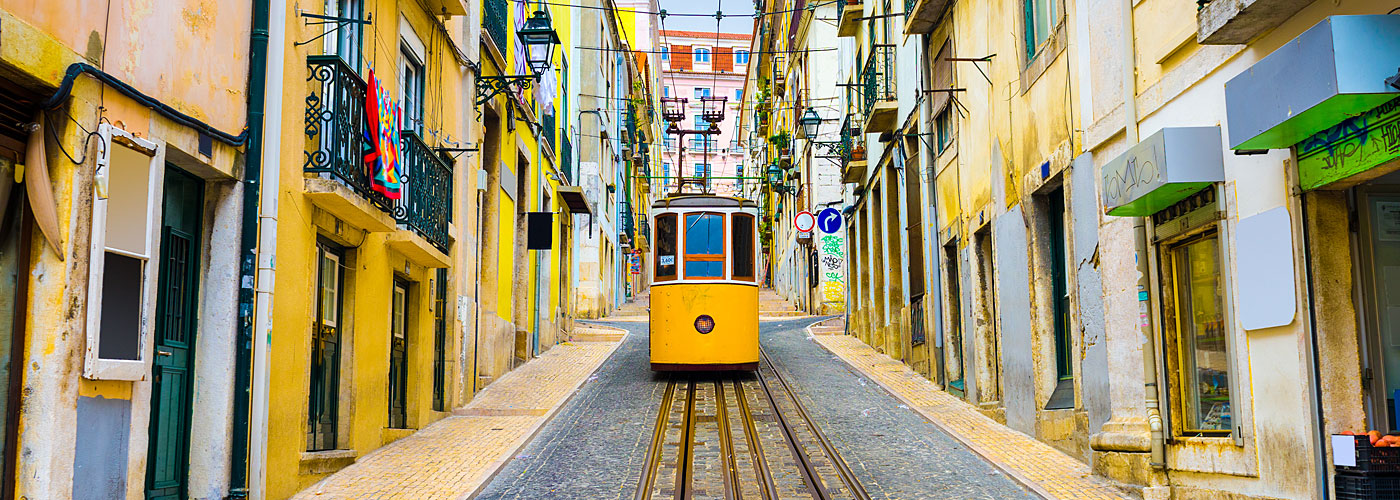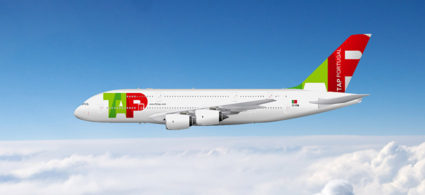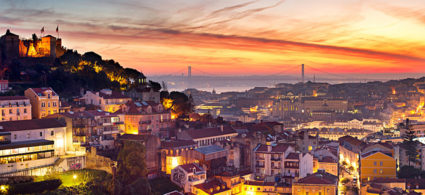

Lisbon is often described as a “romantic capital”, however, it is not the right label for this city. Its timeless atmosphere, its picturesque streets and breathtaking sunsets turn it into an ideal destination for a romantic holiday, even though the city is suitable for all kinds of travelers. Not only couples, but also groups of friends and solo travelers who will find plenty of things to do in Lisbon!
The first thing to do in Lisbon is to discover its many districts: the historical Chiado, the elegant Baixa, the traditional Alfama, Belém and the maritime conquers… Exploring every district on foot and strolling around the narrow streets is the best way to discover the city. However, if you wish to learn more about the local history and culture or if you don’t have too much time, seeing the best of Lisbon on a guided tour can be the right solution for you.
During your holiday to Lisbon remember not to fill only your eyes but also your palate. Taste the local dishes, treat yourself to some creamy pastries and other typical sweets. You will feel like a real local.
If all the things to do and see in Lisbon are not enough, you can still go on a day trip to Sintra, Cabo da Roca, Estoril or Cascais.
Lisbon enjoys a mild climate, with winters that are never harsh and summers that are breezy. Rains are concentrated in autumn and winter, while they are very rare in spring and summer. Due to its favorable climate and the amount of events organized throughout the year, the Portuguese capital can be visited in every season.
The best months to go to Lisbon are June, September and October, periods in which the heat is pleasant and not stifling, the prices of flights and hotels are lower than in July and August and many outdoor events are organized.
In summer the influx of tourists reaches its peak, a factor that affects prices and queues at museums; keep in mind that even in Portugal the majority of citizens have vacations in summer so you may find many stores closed, especially small family businesses.
And remember: before you leave, take a look at the weather forecast for Lisbon!

You can spend the day visiting the historical buildings and monuments of the capital city: the São Jorge Castle, from where you can enjoy a panoramic view over the city, the Jerónimos monastery, the Belém Tower and the Discoveries Monument in Belém; the Church of Sao Roque, which is a masterpiece of baroque architecture. If you want to learn more about the history of the city and its traditions visit the Lisboa Story Centre and the Museo do Fado.
Another characteristic of Lisbon are its four elevadores – elevators. The most beautiful one is the elevador de Santa Justa, a real masterpiece of engineering and architecture.
If you want to see a panoramic view of the city you can go to the top of the Cristo-Rei statue or to the triumphal Arch of Rua Augusta.
If you want to know Lisbon from a different perspective, you can book a cruise on the Tago river, which passes through the city and ends in the ocean. Do not forget to go on a ride on the historical tram 28 to experience an emotional and dizzying tour through Lisbon.
If you’re planning to visit at least a couple of attractions, consider buying the Lisboa Card: you’ll be able to travel for free on public transportation and get discounts on activities and restaurants.
Discover Lisbon through the eyes of expert guides who will take you on a tour of the city's hidden treasures. Participating in a guided visit or a free tour will allow you to capture the true essence of Lisbon.
The free tours are a viable alternative to traditional guided tours. They work like this: participation is free and at the end of the visit you can leave a tip at your discretion. Below you will find our favourite free tour, otherwise you can see the full list by visiting this page.
When the sun goes down the day in Lisbon is not over. The Portuguese capital city is famous for its lively nightlife: start with a drink – or more than one – at one of the several bars located in the Barrio Alto and then go crazy at one of the trendiest clubs of the capital.
If you are not a big fan of house or electronic music, be thrilled by the fading notes of fado, the traditional Portuguese popular music. Attending a faro concert is one of the most unforgettable experiences to do in Lisbon.
Thanks to a rich calendar of events including: traditional celebrations, outdoor clubs, movie and literature festivals, food and wine festivals, sport competitions, trade fairs… there are always new and exciting things to do in the city!
The fastest and cheapest way to get to Lisbon is by plane. The Portuguese capital has only one airport, which is connected to the rest of Europe by direct flights, and there is also a good choice of low cost flights departing from several European airports.
Lisbon airport is less than 10 km from the city center, which is easily accessible by metro or shuttle bus; there are also public buses, which are cheaper but slower.
Getting to Lisbon by train or bus is a very long journey, requiring more changes, and ultimately more expensive than flying.



Even though the city is quite big, getting around Lisbon is easy because the means of transport are efficient and cheap. However, it is good to choose carefully where to stay in Lisbon because each neighborhood has its own identity and may be perfect for certain types of vacations but not suitable for others.
The neighborhood with the highest concentration of accommodations for tourists is the Baixa, an elegant and very convenient area because it has all the services and is well connected to other areas. Given the wide offer of hotels and b&b’s it is possible to find something in every price range, including the economic one. Close to Baixa there is Chiado, an area with similar characteristics that some guides include in the first one.
The most suitable area for a romantic vacation in Lisbon is certainly Alfama, if you are young and love fun, go to Bairro Alto, if you love staying in luxury hotels, go to Avenida da Libertade.
Belém is a bit ‘out of the center and for this reason many visitors exclude it a priori, but it must be said that the center is easily accessible and thanks to lower demand you could get a better accommodation at the same price of the historic districts or even lower.
Getting around Lisbon is really easy because public transportation is efficient and inexpensive. Lisbon’s public transport network includes the subway (4 lines), streetcars or eléctricos (5 lines), buses (over 140 lines including night buses), in addition to the historic elevators and funiculars that help citizens and tourists to quickly and effortlessly overcome the large differences in height between different areas of the city.
Unlike what happens in other European capitals, the metro is little used by tourists on vacation in Lisbon, who generally take it only to go from the airport to the center and vice versa. This is because the lines are designed primarily to connect the center to the peripheral areas, of little interest to tourists. More often you will find yourself using streetcars and buses.
A peculiarity of Lisbon is that public transport is not only a useful service but also an attraction: thanks to the historic streetcars, with their characteristic yellow cars, and metro stations artistically decorated with typical Portuguese tiles.
If you want to make less effort instead of public transport you can use the hop on hop off tourist buses, very comfortable in a city full of ups and downs like Lisbon. All stops are at the main tourist attractions.
What's the weather at Lisbon? Below are the temperatures and the weather forecast at Lisbon for the next few days.
City Card allow you to save on public transport and / or on the entrances to the main tourist attractions.




